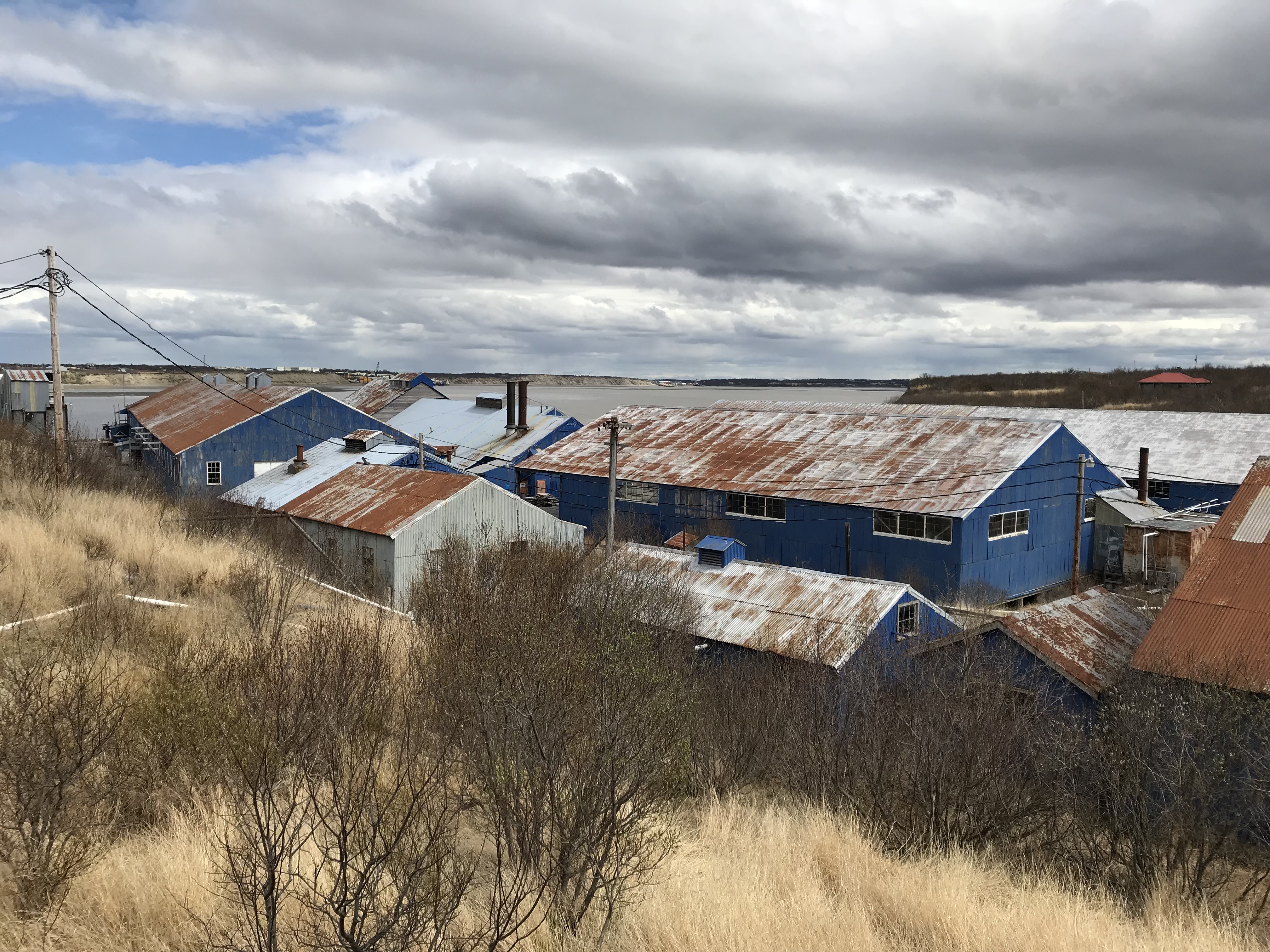
In canneries, the term “Mug Up” means coffee break. It’s also the name of a new effort to share the history of the NN Cannery, a now-closed cannery in South Naknek that functioned almost continuously for 120 years. At last weekend’s Bristol Bay Fish Expo, the NN Cannery History Project launched the new effort with the MugUp Conversations event, where they invited former cannery workers to share their stories.
“I think that you know you may have never even worked in a cannery or even care about canneries, but there’s something to be said for appreciating the history of work,” historian Katie Ringsmuth, who started the project, said.
Since the cannery closed in 2015, Ringsmuth has been working with partners like the National Park Service and the state historic preservation office to ensure its place in history isn’t forgotten. In May, the project received a $50,000 Maritime Heritage Grant from the park service to collect oral histories from people who lived and worked there. They’re partnering with the University of Alaska-Fairbanks, and the stories will be available on UAF’s site Project Jukebox.

“Many of the people who worked at these canneries, no one knows about them,” Ringsmuth said. “And when you start looking at these canneries and you’re looking at the international crews that contributed to one of Alaska’s most significant industries, I think it’s very important to record these stories.”
Until the mid-90s, Ringsmuth’s father ran the cannery, which is now owned by Trident Seafoods. She spent time sliming fish there in the summers to work her way through college, working shoulder to shoulder with people from all over the world.
“The experience of being able to work next to people who were different than me, had different customs, a different perspectives, different understanding of the world, but nevertheless, we all were working toward a common goal,” Ringsmuth said. “Allowed me to, without even knowing it, appreciate the world.”
The grant also means the project is one step closer to becoming the first Alaskan cannery designated as a Maritime Historic District. The designation would make it easier for the project to receive additional funding in the future and recognize its importance in Alaskan and global history.
“In part, what I’m trying to do is bring dignity to the cannery work, the cannery story. Yeah sure it’s great you know everybody talks about how cool it is to be a Bristol Bay fisherman,” Ringsmuth said. “But I want kids out there to speak equally as proud of the cannery work. Yeah, my mom worked in an egg house, that’s awesome, right.”
The storytelling project is just one piece of a multi-faceted effort to preserve the cannery’s history. They’re also working to create a traveling MugUp exhibit that would bring the story of the cannery around the state, the country and the world.
Erin McKinstry is Alaska Public Media's 2018 summer intern. She has an M.A. from the University of Missouri's School of Journalism and a B.A. from Knox College. She's reported stories for The Trace, The Midwest Center for Investigative Reporting, Harvest Public Media, the IRE Radio Podcast, KBIA and The Columbia Missourian.




